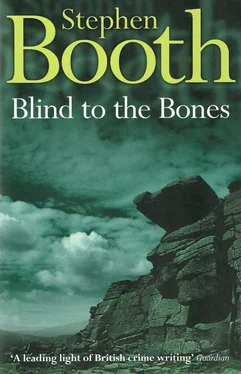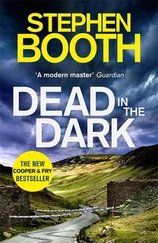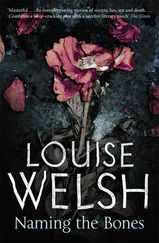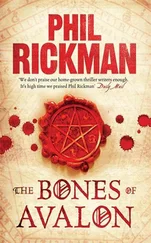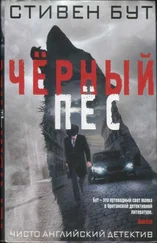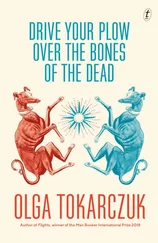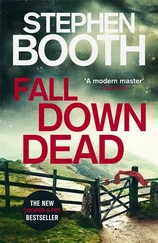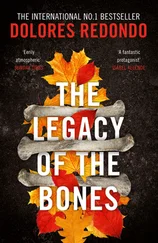Alton held the stick up to his face and squinted towards the tip. The stain on the wood was dark and had soaked deep into the grain of the blackthorn. Its shape was rather like a map of Derbyshire — a long trickle running away to the north, where it pooled into a smear at the Yorkshire border. He nodded with satisfaction at the image. The village of Withens was somewhere in that smear that was border country, a lost and forgotten speck in miles of empty peat moor. And St Asaph’s sat on the edge of the village, gradually disappearing in a mass of encroaching undergrowth, like the burnt-out Ford Fiesta on the grass verge at the top of the road. In most Peak District villages, there would be a committee whose aim was to win the Best-Kept Village competition, and they wouldn’t have rested until they had got the abandoned car removed or the churchyard cleared. Not in Withens, though.
All the members of his congregation were either old, or strange. Often both. Services were held at St Asaph’s only every alternate Sunday. Most of the elderly residents of the bungalows came, and a few people made the journey from Hey Bridge. But not many others. For the modern generation, attending church was a cause for suspicion. To admit to being a Christian was like confessing to a social problem.
But then again, attending church didn’t make you a Christian, any more than standing in a garage made you a car.
Sometimes Alton felt sorry for St Asaph. The saint had carried hot coals in his cloak to warm his master, without burning himself or his garments, which had proved his holiness, or so it was said. But carrying hot coals wasn’t much to be remembered for, was it? Some people would suggest it was a foolhardy thing to do.
But if anyone who wasn’t holy enough tried to carry those hot coals, they would certainly be burned.
Ben Cooper looked up the road past Waterloo Terrace. He had been planning to call at the church in Withens to see if the Reverend Alton was around. He wanted to ask him about the Border Rats, and maybe to get a look at Craig Oxley’s grave, if he really was buried at St Asaph’s. Cooper had started to feel that everything he was told by someone in Withens had to be double-checked.
But he had noticed there were cars outside the Quiet Shepherd, and people around the doors of the stone garage where he had seen the clay-covered wooden boards. What was going on at the pub now? Well, the only way to find out was to go and see.
It was only when he saw the baskets of flowers being brought from the cars and the petals being pressed into place in the clay that it dawned on Cooper what he had been looking at on his previous visit. Like many local people, it was something he had taken for granted for years, and had never bothered to wonder about the details of how they came about.
He recognized Marion Oxley, who glowered at him, but carried on with her work filling in blocks of colour with blue hydrangea petals in outlines that seemed to have been created with rows of black coffee beans.
‘You’re making a well dressing,’ said Cooper.
‘That’s right.’
An outline drawing had been made in the surface of the clay with a sharp instrument — probably one of the knitting needles lying around on a side table. The pattern had been emphasized by pressing in holly, rowan berries and alder cones, with mosses, bark, and lichens. The flower petals were going on last, the picture being created from the bottom upwards so that the petals overlapped and the rainwater would drain off.
If Diane Fry had been here, she would have said it was just another quaint rural custom. But this one was unique to Derbyshire, and attracted many thousands of visitors to the Peak District every year to see the displays. The pictures in the well dressings always told a story, too — often a religious theme, but sometimes subjects with more local significance.
‘What’s that background made of?’ asked Cooper, pointing at the pale grey material backing the picture.
‘It’s fluorspar. We just call it spar.’
‘Of course.’ Fluorspar was local, too — the product of a number of quarries in the mineral-rich White Peak.
The women were fussing around him, and Cooper started to feel that he was in the way. He couldn’t see yet what the picture was going to be. Only the background had been filled in. But soon a picture would appear in living colour for the display. And it would be living too — or almost, since all the materials were natural. Some of the hundreds of well dressings that appeared through the county from April through to September were astonishingly detailed and inventive, and it was no wonder they were such an attraction for visitors. Withens just seemed such an unlikely place to find one.
‘This is quite an early well dressing, isn’t it?’ he said.
‘We’re the earliest at this end of the county. It means we have to rely on what’s in flower.’
‘Is the display this weekend?’
‘Of course. There wouldn’t be much point petalling now, otherwise. It’ll only last a few days.’
And the well dressings had started as a way of thanking the water goddess who provided a village’s clean water supply. Some villagers had believed that it had been their pure water that had protected them from the Black Death that had ravaged the rest of England in the fourteenth century.
Derek Alton’s hands were stained green and smelt of leaking sap from the dock plants. Their leaves were large and healthy-looking. But when he grasped them in his bare hands, he could feel both sides at once, the cold and the warmth. Another eternal duality lurking in the undergrowth to surprise him. The cold of death and the warmth of life. The darkness and the light.
Alton pulled his hand away, thinking of the slugs and snails that might be clinging to the undersides of the leaves. He wiped his palms on his trousers, and decided he should have worn his gloves. He hardly dared to pull at the leaves too hard, because they were surprisingly fragile and ripped easily in his fingers. Yet their stems were as tough as any weed he had come across, and their roots were firmly fixed, so that they clung tenaciously to the ground even when he threw all his weight into heaving on them. He ended up with pieces of shredded leaf and tiny bits of their flesh pressed into the creases of his hands, his fingers slippery and stained green by their juice. Their broken stems smelled faintly acid.
It must have presented a major engineering exercise to get the massive flat gritstone slabs into place over the graves. It was almost as if the families who had paid for them had been making absolutely sure that their dead relatives were never going to push their way up out of their graves and come back again. No person could lift one of those slabs on his own. But nature could do it. Nature was pushing them up, sliding them aside, pulling them down into the ground and tilting them at jaunty angles, making a joke of the whole thing.
Saddest of all were the stones at the western end of the graveyard. They were tiny by comparison to the gritstone slabs. In fact, they reminded Alton of the little milestones that could still occasionally be seen on the roadside in the Peak District, relics of a forgotten period when travel was slow enough to see them.
At this time of the year, the tiny stones were just managing to peep above the bracken litter, but they were destined to disappear again within a week or two. Alton had no idea why the people who were remembered by the stones had not even earned their full names on their memorials. They bore only initials and a year. Here were G.S. and M.W., and over there C.S. All of them seemed to have died in 1849.
Was it just lack of money that had restricted the poorer families to a tiny stone with no space on it for a proper inscription in tribute to the dead? Or had it been yet another peculiar local custom?
Читать дальше
Конец ознакомительного отрывка
Купить книгу
